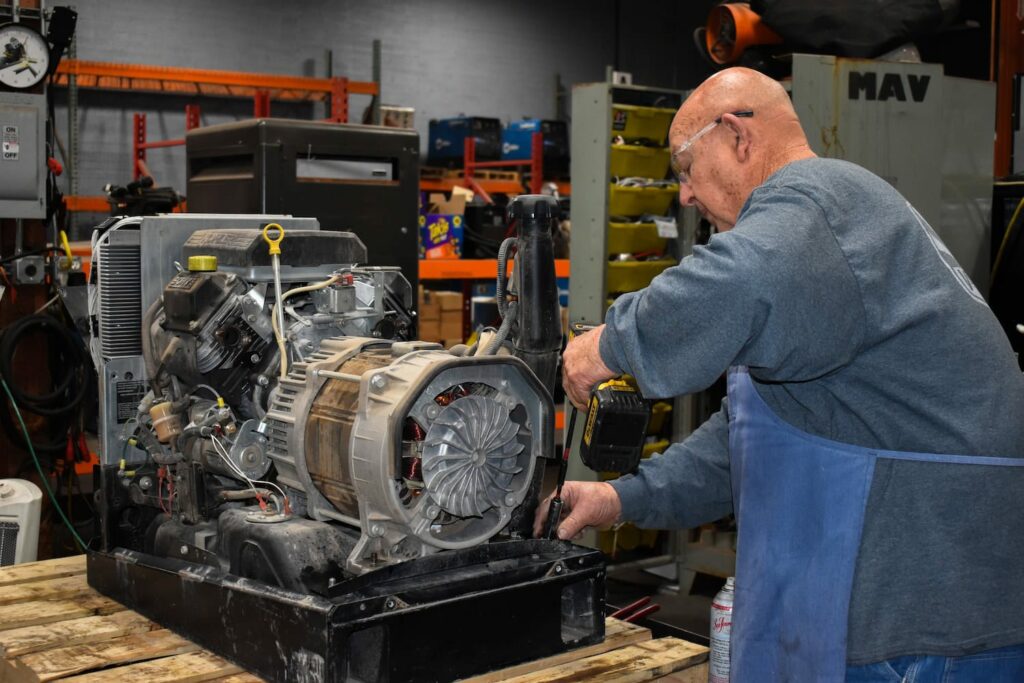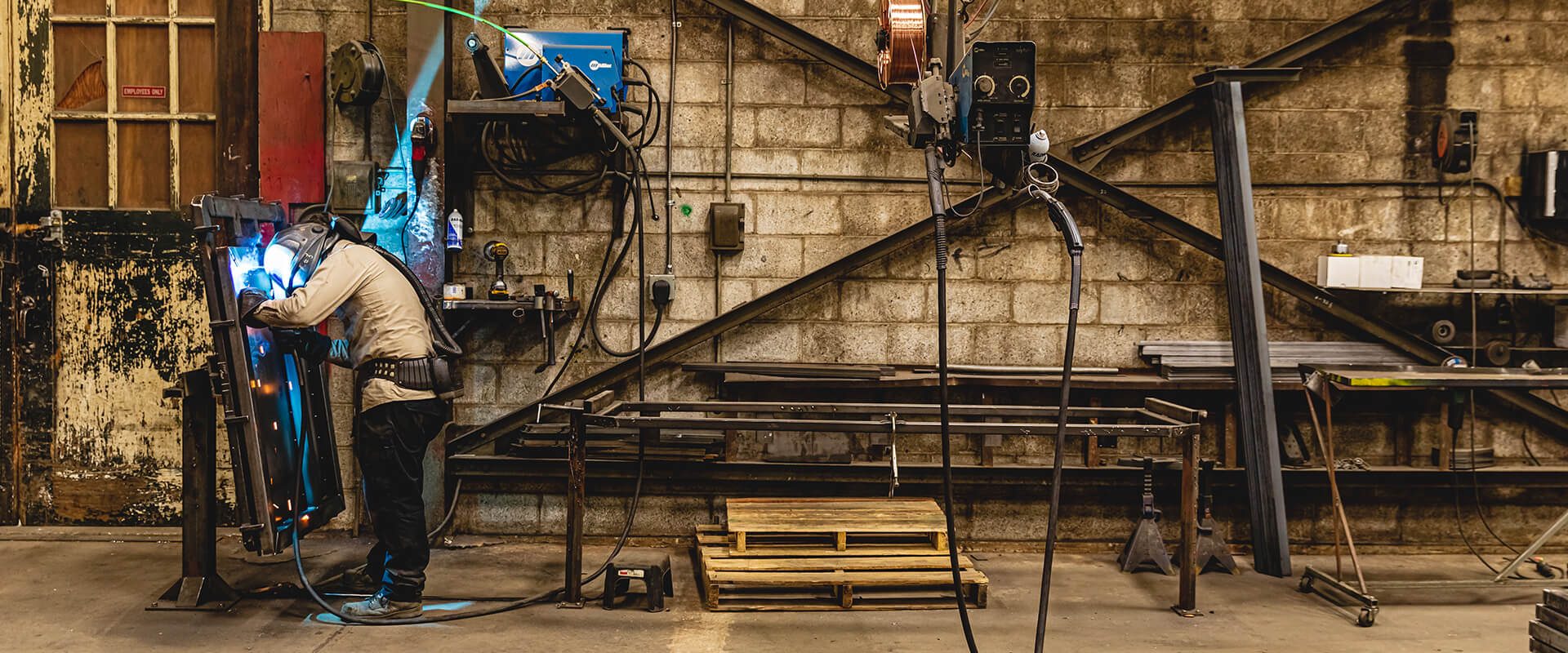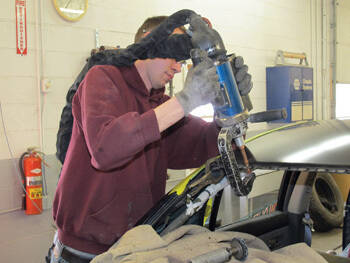Red flags in welding repair and what Belgrade can do about them
Wiki Article
Common Welding Repair Work Issues and Exactly How to Address Them Successfully
Welding repair services often encounter a variety of concerns that can threaten the stability of the end product. Usual troubles include inadequate penetration, porosity, and imbalance, among others. Each problem presents one-of-a-kind challenges that call for details approaches for resolution. Understanding these concerns is vital for welders intending to boost their end results and skills. This conversation will explore these common welding fixing concerns and effective techniques to address them.Inadequate Penetration
Inadequate infiltration occurs when the weld steel stops working to fully fuse with the base material, causing weak joints and potential architectural failings. This issue frequently originates from insufficient warmth input, inaccurate electrode angle, or inappropriate welding speed. Welders may encounter poor penetration due to a mistake of the needed criteria for a certain product density or kind. Additionally, contamination on the base product's surface can hinder reliable bonding, aggravating the problem. To resolve insufficient infiltration, welders should guarantee appropriate setups on their equipment and keep a clean work surface. Regular inspection of welds is advised to identify any type of shortages early, permitting for timely modifications and the prevention of jeopardized structural stability in welded assemblies.Porosity
Porosity is an usual defect in bonded joints that shows up as small gas bubbles caught within the weld steel. This problem can endanger the honesty of the weld, resulting in decreased toughness and potential failing under stress. Montana Mobile Welding and Repair Belgrade Welding. Porosity generally develops from contamination, dampness, or incorrect welding strategies, which allow gases to get away into the molten weld pool. To address porosity, welders should guarantee correct surface area preparation, preserve a clean workplace, and utilize appropriate welding specifications. Furthermore, selecting the right filler material and protecting gas can minimize gas entrapment. Normal assessment and screening of welds can assist determine porosity early, assuring prompt rehabilitative actions are taken, therefore protecting the quality and dependability of the bonded frameworkImbalance
Imbalance in welding can arise from various factors, consisting of improper configuration and thermal growth. Comprehending the origin is essential for reliable resolution. Numerous adjustment techniques are offered to straighten elements and ensure structural honesty.Causes of Imbalance
Welding imbalance frequently stems from a selection of underlying concerns that can endanger architectural stability. One primary reason is improper fit-up of elements before welding, which can bring about gaps and irregular surfaces. Variations in thermal development during the welding process can also cause distortion, particularly if the products being signed up with have various coefficients of growth. In addition, inadequate fixturing and securing may stop working to hold elements securely in position, resulting in activity during welding. Poorly conserved tools, consisting of welding equipments and tools, might introduce incongruities in the weld grain, more adding to misalignment. Driver mistake, stemming from insufficient training or experience, can likewise play a substantial role in creating misaligned welds.
Modification Methods Offered
Resolving imbalance efficiently calls for a combination of corrective methods customized to the certain problems handy. One common method is making use of components or jigs to hold components in the right position during welding, guaranteeing constant positioning. Furthermore, preheating the products can help in reducing distortion and improve fit-up. For substantial imbalance, mechanical realignment techniques, such as making use of hydraulic jacks or clamps, can be employed to deal with the position prior to welding. Post-weld warmth treatment may likewise be necessary to alleviate tensions triggered by imbalance. Finally, careful evaluation and adjustment throughout the setup phase can stop misalignment issues from coming to be substantial problems, advertising a smoother welding procedure and boosting general structural honesty.Distortion
Distortion is an usual obstacle in welding that can occur from various elements, consisting of uneven cooling and heating. Comprehending the root causes of distortion is important for applying reliable avoidance methods. Addressing this concern not just enhances architectural integrity but additionally improves the total quality of the weld.Reasons for Distortion
When subjected to the intense warmth of welding, products frequently undergo changes that can lead to distortion. This phenomenon primarily occurs from thermal expansion and contraction during the welding procedure. As the weld area heats up, the material increases; upon cooling, it contracts, which can develop inner stress and anxieties. In addition, irregular heating throughout a workpiece can intensify these stress and anxieties, resulting in warping or flexing. The sort of product additionally plays a considerable function; metals with varying thermal conductivity and coefficients of growth may respond in a different way, leading to unforeseeable distortions. Inadequate joint design and poor fixturing can add to imbalance during welding, increasing the likelihood of distortion. Understanding these causes is crucial for effective welding repair work and avoidance strategies.Prevention Techniques
Reliable prevention methods for distortion throughout welding concentrate on managing warmth input and making sure appropriate joint layout. Maintaining a constant heat input aids to lessen thermal expansion and tightening, which can lead to distortion. Making use of techniques such as preheating the work surface can likewise lower the temperature level slope, advertising consistent home heating. Additionally, selecting ideal joint layouts, such as T-joints or lap joints, can improve security and lower tension concentrations. Carrying out correct fixturing to safeguard the workpieces in position further aids in preserving alignment throughout the welding procedure. Lastly, staggered welding sequences can disperse warm more uniformly, avoiding localized distortion. By using these methods, welders can substantially lower the likelihood of distortion and improve the overall quality of their welds.Splitting
Cracking is an usual problem run into in welding repairs, commonly resulting from numerous elements such as incorrect air conditioning prices, material selection, or poor joint prep work. The incident of cracks can greatly jeopardize the honesty of the weld, leading to prospective failings throughout procedure. To address this problem, welders have to first assess the origin, making sure that products are suitable and properly picked navigate to these guys for the specific application. Additionally, regulating the air conditioning rate during the welding process is important; quick cooling can cause tension and bring about splitting. Correct joint layout and preparation additionally add to reducing the threat. Executing these approaches can boost weld high quality and durability, inevitably decreasing the possibility of cracking in finished weldments.
Insufficient Fusion
A considerable issue in welding repairs is insufficient blend, which happens when the weld steel does not appropriately bond with the base product or previous weld passes - Montana Mobile Welding and Repair Welding. This defect can bring about weaknesses in the joint, possibly compromising the honesty of the bonded structure. Aspects contributing to insufficient combination consist of not enough warm input, incorrect welding strategy, and contamination of the surfaces being joined. To address this issue effectively, welders must ensure appropriate pre-weld cleansing and surface area preparation, along with change their welding specifications to attain sufficient infiltration and blend. Routine inspection during the welding procedure can likewise assist identify incomplete blend early, enabling timely restorative actions to enhance the total top quality of the weldOverheating
While welding repair work can improve architectural integrity, overheating presents a substantial challenge that can result in product deterioration. Extreme heat throughout welding can modify the mechanical properties of steels, causing reduced strength, raised brittleness, and bending. This sensation is specifically crucial in high-stress applications where structural dependability is paramount. Determining getting too hot can include aesthetic evaluations for staining or distortion, as well as monitoring temperature level during the welding procedure. To mitigate the threats connected with overheating, welders should utilize ideal strategies, such as controlling warm input, changing travel rate, and utilizing appropriate filler materials. Additionally, applying pre- and post-weld warmth treatments can help bring back product properties and boost the overall high quality of the repair, ensuring long-term efficiency and security.Regularly Asked Concerns
What Are the Usual Signs of a Welding Flaw?

How Can I Test My Welds for Top quality?
To examine welds for top quality, one can utilize visual evaluations, ultrasonic testing, and radiographic methods. Each technique assures architectural integrity, recognizes issues, and confirms adherence to specified criteria, ultimately enhancing the reliability of the bonded joints.What Safety Precautions Should I Take While Welding?
When welding, one need to focus on security by putting on ideal individual safety tools, guaranteeing proper ventilation, safeguarding combustible materials important link away, keeping a tidy workspace, and being aware of surroundings to avoid injuries and crashes.Can I Repair a Weld Without Remodeling the Entire Joint?
Repairing a weld without redoing the entire joint is feasible, depending upon the damages (Montana Mobile Welding and Repair Belgrade Welding). Methods such as grinding, including filler product, or utilizing a welding process can properly resolve specific imperfections while preserving the surrounding frameworkWhat Devices Are Essential for Effective Welding Repair Works?
Essential tools for effective welding repair services consist of a welding equipment, wire brush, mill, protective equipment, clamps, and filler materials. Each tool plays a vital function in guaranteeing top rohr welder quality and security during the repair work process. Porosity typically arises from contamination, wetness, or inappropriate welding techniques, which permit gases to leave right into the molten weld swimming pool. Poorly conserved devices, consisting of welding machines and tools, might present variances in the weld bead, more contributing to imbalance. When subjected to the intense heat of welding, products often undergo modifications that can lead to distortion. Splitting is a typical concern run into in welding repairs, typically resulting from various variables such as incorrect air conditioning prices, product option, or poor joint prep work. A considerable problem in welding repair services is insufficient combination, which happens when the weld metal does not properly bond with the base material or previous weld passes.Report this wiki page